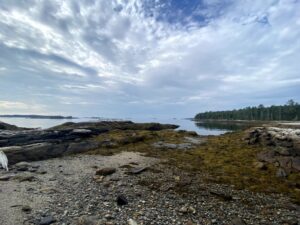A Note from a CAS Scholarship Recipient to Hog Island
by Heather Jones

It’s hard to put into words how attending Hog Island’s Educator Week has affected me as a teacher. It has reenergized me heading back into the classroom, excited me about new strategies I will be using, and created a lasting connection between other educators across the country.
One of the first things we did as educators was set up a Facebook group so we could all stay connected and share our photos from our time together even after we left the island. It seems odd to bond so quickly with others, but I think there is just an inherent connection between teachers. In our group we have already shared book ideas, asked for advice, and wished each other well on the school year.
The strategies I learned from my time at Hog Island are numerous. Although we don’t have intertidal pools to explore in Missouri, I plan on letting my students explore ponds and streams in the same manner. Finding organisms, practicing identification, asking questions, and making connections were all very valuable explorations. During our Ecosystems Unit with 6th grade students, I plan on sharing my experience at Hog Island and discussing the efforts they are taking at Hog Island to establish a colony of Puffins on Easter Egg Rock. We were also able to view the old seaweed pressings and created our own seaweed press during our time there. I can take the same strategy and allow students to create wildflower pressings from our newly established native prairie and wildflower plot at school. I have been excited about the possibility of students creating an inventory of native plants in our prairie with their presses. Another engaging strategy I plan on using, taught by the wonderful Ted Gilman, is nighttime moth observations. Ted taught us how to create a mixture of beer and bananas to smear on tree bark to attract moths and other night dwelling bugs. Our 6th grade students would love the opportunity to observe and identify bugs as part of their overnight camp experience.
Lastly, our week together was focused on diversity and inclusion. Fortunately, we in my school district, we receive diversity and inclusion training throughout the school year, but this training makes a big impact when you can hear from teachers from all over the country. We all participated in a fishbowl discussion about diversity. Fishbowl discussions are a wonderful tool to use with students over difficult topics that ensure that everyone’s voice is heard. We also discussed the indigenous people that lived on Hog Island. We discussed their impact on the land and acknowledged their land prior to one of our programs. I believe land acknowledgements are incredibly powerful for students to be a part of. I plan on incorporating land acknowledgements at our 6th grade science camp as well as our discussion of our native prairie plot at our school.
